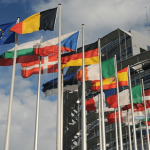Today we want to talk to you about a type of European project that we have never covered in our blog: Youth Dialogue Projects.
Those already familiar with European projects’ world will know that the Erasmus + program it is divided into 3 key actions, called KA (Key Action) 1, KA2 and KA3. Youth Dialogue projects are within Key Action 3: support for policy reform.
Compared to the other two key actions, the third has a more political connotation. This is a pretty large chapter that includes several areas, aimed at improving and strengthening European policies, including: knowledge in the fields of education, training and youth, policy innovation initiatives, cooperation with international organizations, dialogue between stakeholders, promotion of policies and the program.
The Youth Dialogue Projects take place in this general context, which we do not go into here, because we want to focus more on the practical part that concerns us project managers and project designers closely.
First of all, these projects (unlike others in the Erasmus + program) are managed directly by the National Youth Agency of each applicant country. This will therefore be the body to refer to submit the application, to receive the results and also, in case of approval, for the management of the project.
The general aim is to promote the active participation of young people in democratic life and to encourage among young people the debate on issues concerning the themes and priorities set out in an important document that regulates EU intervention in the field of youth policies: the European Youth Strategy.
What is it about? The European Youth Strategy is the reference document for all European policies for young people between 2019 and 2027, which was produced on the basis of the 2018 European Council. It focuses on 3 areas of intervention summarized in the 3 keywords: engage, connect, empower.
During some investigation and dialogue events between the EU and young people over the years, 11 objectives have been drawn up, called Youth Goals:
1. Connecting EU with Youth
2. Equality of All Genders
3. Inclusive Societies
4. Information & Constructive Dialogue
5. Mental Health & Wellbeing
6. Moving Rural Youth Forward
7. Quality Employment for All
8. Quality Learning
9. Space and Participation for Al
10. Sustainable Green Europe
11. Youth Organisations & European Programmes
And it is precisely on these Youth Goals and these priorities that Youth Dialogue Projects must go to intervene.
So, in summary, the EU Strategy and Youth Goal must be our point of reference if we want to present a youth dialogue project.
But let’s move on to practice: what activities can be carried out within this type of project? Meetings, conferences, seminars, training, forums and events that aim to positively impact the participation of young people in an active and aware political life, in relation to the objectives and issues established by Europe and by the young people themselves during the consultation events.
Compared to other Erasmus + projects, there are two particular aspects to consider
1. This is a project carried out by young people for young people: precisely because the goal is youth dialogue, it is important that young people are not only recipients but active players in the realization of the project. In this case also the very young (13 to 30 years) are included. However, it is possible to involve older personal experts in the project, specifying their role.
2. The events can be both national and transnational, international mobility and cooperation between partners from different countries are therefore not an essential prerogative.
The types of bodies and organizations that can apply for this project are both public and private bodies that deal with the participation of young people in democratic life from different perspectives. The types of eligible organizations are indicated in the Erasmus + program guide.
Finally, here are some tips to present a winning project:
1) Make your project participatory, involving all the bodies involved also in the planning phase and involving young people actively;
2) Develop your project in different stages, clearly describing the preparation of each activity and its concrete and measurable impact, including future project developments;
3) Focus on objectives and actions that can have a concrete educational value and bring about a change in the lives of young people;
4) Make sure that the project can foresee a multiple growth, not only for the target group, but also for the young people who will manage the project;
Ready to apply? The next deadline will be October 1st 2020. For more information on the program, you just have to consult the Erasmus Plus 2020 guide and the website of your National Agency.
If this article has been useful to you and you want to know more, continue to follow us, and find out how we can collaborate by visiting our website.


